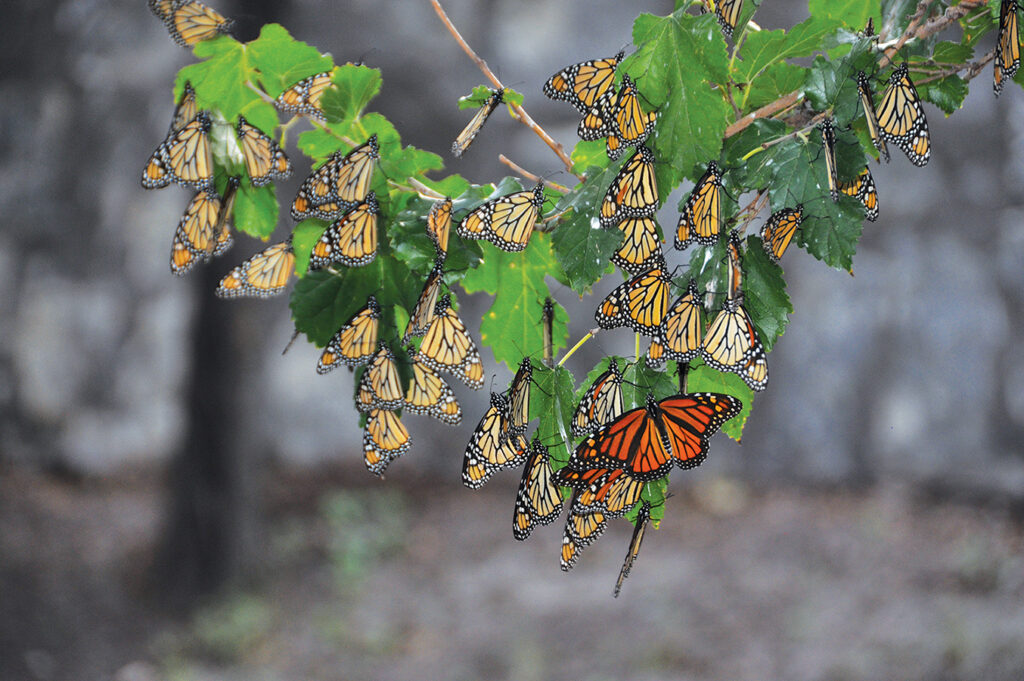By Karen Gleason
The 830 Times
It’s a cool 67 degrees, and the sun is shining brightly on this gorgeous October Sunday morning. I’ve brewed myself a mug of steaming peppermint tea with a touch of summer honey in it, and I’ve pulled a lawn chair from the patio into the grass of the backyard so I can watch the blue sky.
Well, I wasn’t out in the back yard to watch the sky; I was out to count Monarchs as they flew past my location.

I saw my first Monarch butterfly passing through Del Rio Sept. 10, fluttering ever south to the species’ ancestral wintering grounds in central Mexico.
I and other local Monarch watchers – thank you, Pat Bowers and Sarah Howard! – have been seeing Monarchs ever since that first sighting in September, and this year it seemed like the butterflies’ annual migration south has been much more drawn-out and sporadic.
I was talking to my friends Sally Anne and Eric Finkelstein and Jane Morain about the migration while we enjoyed servings of the city’s very best barbacoa at El Toro Restaurant, 503 N. Main St., recently, and Eric opined that we haven’t had any really strong north fronts push through the area as we’ve had in years past.
The Monarchs ride the north winds of these first fall fronts to make their long trip a little easier. The progress of their journeys can be tracked on the web site Journey North. Over the past week, there have been sightings of communal roosts in Junction, Rocksprings and in the Amistad National Recreation Area.
I started looking for the Monarchs’ traditional roosts here in Moore and Romanelli Park early this month.

I found roosts of hundreds of Monarchs in both sites Oct. 10, but the individual roosts weren’t as big as I’ve seen them in years past. Instead, it seemed like there were a lot of Monarchs roosting singly and in small clusters of two, three, five and 10 in sites scattered throughout both Moore and Romanelli parks.
And that has seemed to be the theme of this year’s Monarch migration through Del Rio.
As I said, I’ve been seeing smaller numbers, but those numbers are flowing through the area almost continuously.
I returned to Moore Park earlier on Sunday morning, but didn’t find any butterflies. When I went to Romanelli Park though, I found some small clusters of Monarchs clinging to the branches of the big sycamores growing by the Madre Ditch in the park.
As I sat in my lawn chair at home later on Sunday morning, I counted every Monarch that passed by for half an hour, and I counted 98 individuals.
Please keep sending me your own sightings!
—
Contact the author at delriomagnoliafan@gmail.com



